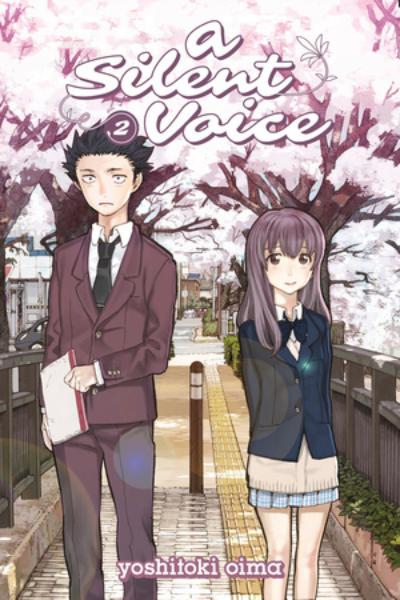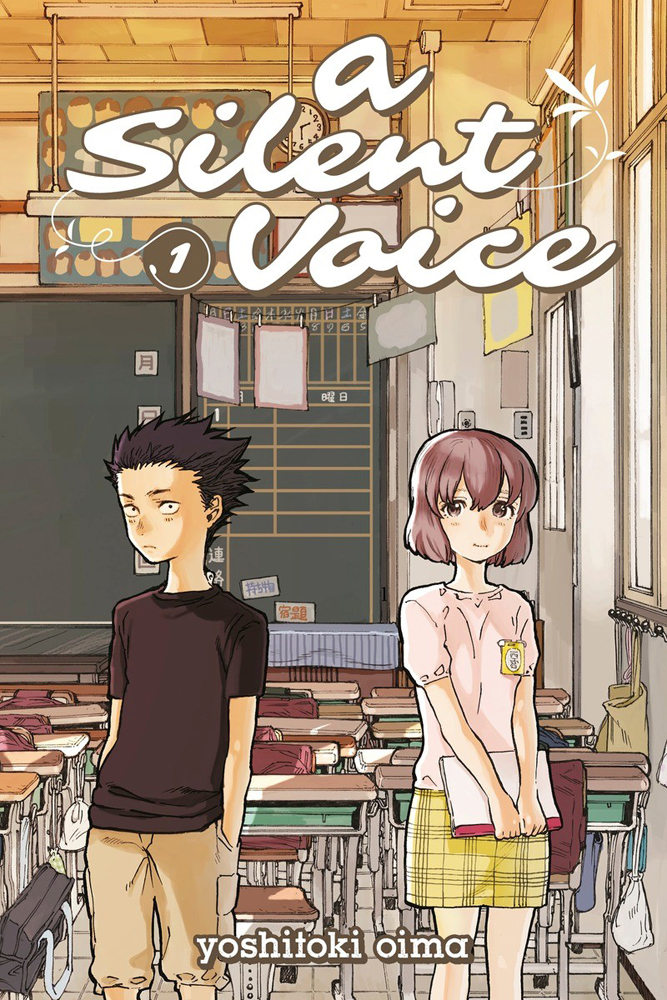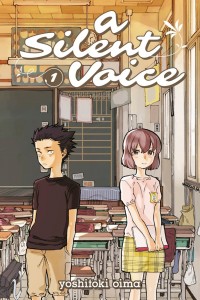By Yoshitoki Oima. Released in Japan as “Koe no Katachi” by Kodansha, serialized in the magazine Weekly Shonen Magazine. Released in North America by Kodansha Comics.
After the pressure cooker that was the first volume of this series, it was somewhat inevitable that things would slow down and get a bit less traumatic with this second one. this is not to say that nothing happens, but we need to take a step back from the brink and see where our hero and heroine are now. Indeed, taking a step back from the brink is exactly what Shoya does, as after seeing Shoko again he makes a decision not to kill himself (which leads to one of my favorite parts of the book, where his mother confronts him about it and accidentally burns the money that he saved up for her. She’s presented as sort of a grown-up airhead much of the time, but I loved her reasoning in this scene as to why it was fine she burned the money.
As for Shoko, there’s a nice bit of narrative fooling that makes us think that we’re hearing her fairly negative thoughts about seeing Shoya after all these years. but in fact after a brief moment Shoko proves to be as sweet and understanding as you’d expect from a manga like this, and it turns out the narrative voice we heard hating on Shoko was her younger sister Yuzuru, who understandably thinks that Shoya ruined her sister’s life. This leads to her amusingly pretending to be Shoya’s boyfriend, which I didn’t buy for one moment, mostly as I assumed she was just a young tomboy from the start. Unlike Shoko’s mother (who not only does not remotely forgive Shoya for what he did to her child, but seems to have the ability to literally teleport in order to slap someone across the face), Yuzuru finally sees that Shoya really is making an effort to make amends, and starts to warm up to him by the end of the book.
Of course, it’s not as easy as that. I was impressed with how Shoya can still be resolutely unlikeable at times, even as we see him trying to deal with the fallout of various events (including serving a suspension for leaping into the river to save Shoko’s notebook), he’s still bad at understanding other people to a great degree. He makes friends with Tomohiro, who also seems to be bullied in his classroom, though that’s more for the traditional “I am pudgy and a bit of a nerd” than anything else, but we still get his POV of his fellow students as having X’s over their faces, which is a stark reminder of how in many ways his basic worldview hasn’t changed much. His guilt about Shoko drives him to learn sign language and apologize, but he needs to make more effort with everyone else. And that’s hard, given what happened in Volume 1, as no one will allow him to make that effort.
I’m not sure if this is going to go in a romantic direction – the ending seems to imply it might, but I’m not sure if that’s the best thing for this series, and in any case the two leads still have a lot more to sort through before that can happen. In the meantime, the second volume builds on the success of the first, and is not nearly as discomfiting.



